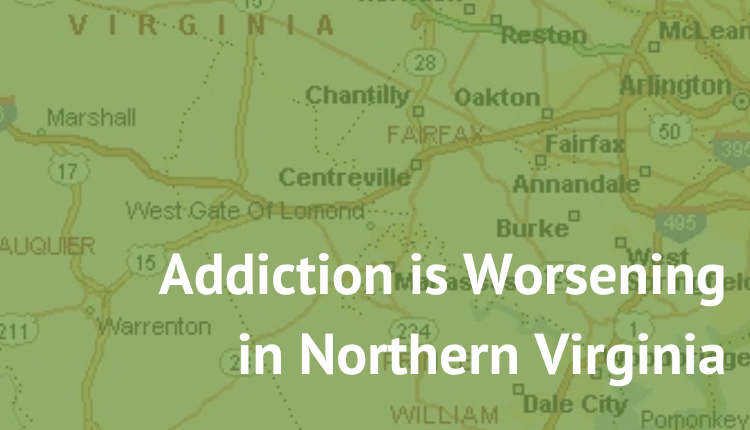Why Northern Virginia addiction rates are increasing and how to treat the problem
More than 32 percent of adults in Northern Virginia have a family member or friend experiencing the disease of addiction. This presents a notable increase from a 2021 survey showing that 25 percent of local adults reported knowing someone hospitalized due to addiction.
The new data was released by Inova, a Northern Virginia nonprofit healthcare provider. As part of their “Act on Addiction” campaign, they strive to create a dialogue around addiction in Northern Virginia, the stigma around seeking treatment, and its impact on the community.
This new data comes at a time of dramatically increased opioid deaths in the United States, including in Virginia. In 2021, the US witnessed a grim milestone. For the first time, drug overdoses killed more than 100,000 people nationwide in a single year. Of those deaths, two-thirds were tied to fentanyl.
Between 2001 and 2021, the death rate due to opioid overdose in Virginia increased from seven per 100,000 to 26 per 100,000, according to the Inova data. The results of this year’s “Act on Addiction” survey underscore the presence of addiction among the younger generations. According to the survey, a higher percentage of Millennial, Gen X, and Gen Z respondents, reported having a family member or friend with addiction, compared to Baby Boomers.
Policy Change Needed
It should be evident to both policymakers and the general public that addiction rates have reached unprecedented levels across the country. The impact of the addiction epidemic includes fatalities, suffering, and shattered families. Addiction causes thousands of preventable deaths each year. Shockingly, policymakers often overlook the fact that alcohol claims more lives each year than opioids. This underscores that the issue extends beyond the availability of opioids or fentanyl. Deaths and overdoses linked to various controlled and illicit substances are on the rise, not just opiates. This emphasizes that we face a broader addiction crisis, not solely an opioid one.
A June report from the American Psychological Association indicates that alcohol-related deaths rose 25 percent between 2019 and 2020. The same report found that more people under age 65 died from alcohol in 2020 than from COVID-19.
If we shift our collective focus away from solely addressing opioid availability and towards tackling addiction as a whole, we see the importance of investigating why individuals develop addictive disorders. This shift is crucial because it prompts us to consider the underlying causes of the crisis. Addiction-related deaths aren’t limited to any single substance. By delving into the root causes of addiction, we gain a deeper understanding of the urgency for comprehensive treatment resources capable of addressing the complexity of this disease.
New Paradigm Recovery can help
New Paradigm Recovery treats adults who live and work near the program’s Tyson’s Corner location. Many of our clients are high-performing and licensed professionals and career military members. Many of these clients experience the stress associated with the demands of balancing family and career obligations.
Addiction, a disease affecting individuals across diverse backgrounds, also varies in its impact based on individual experiences. Recognizing this, we acknowledge that no single treatment approach or provider can adequately address the needs of everyone. Factors such as specific diagnoses, medical histories, familial relationships, trauma, life events, and access to resources all influence the alignment of clients with suitable treatment providers. Not every provider is equipped to assist every individual and family. The struggle to find a the right provider stands as a significant contributor to unsuccessful treatment attempts.
New Paradigm Recovery attempts to ensure that their services and specialties match client needs before a client is admitted to treatment. Assessing client needs prior to enrollment reduces disengagement chances. It’s vital for maintaining care continuity. At New Paradigm Recovery, working closely with clients, referents, and other client healthcare providers before starting treatment results in a better experience for both clients and the treatment team.
If you or someone you love is struggling with addiction in Northern Virginia or the metro-DC area, New Paradigm Recovery can help. We are the region’s leading outpatient addiction treatment and mental healthcare provider. For more information about our admissions process, click here.

